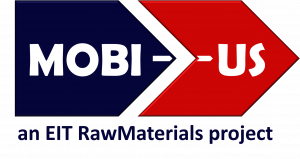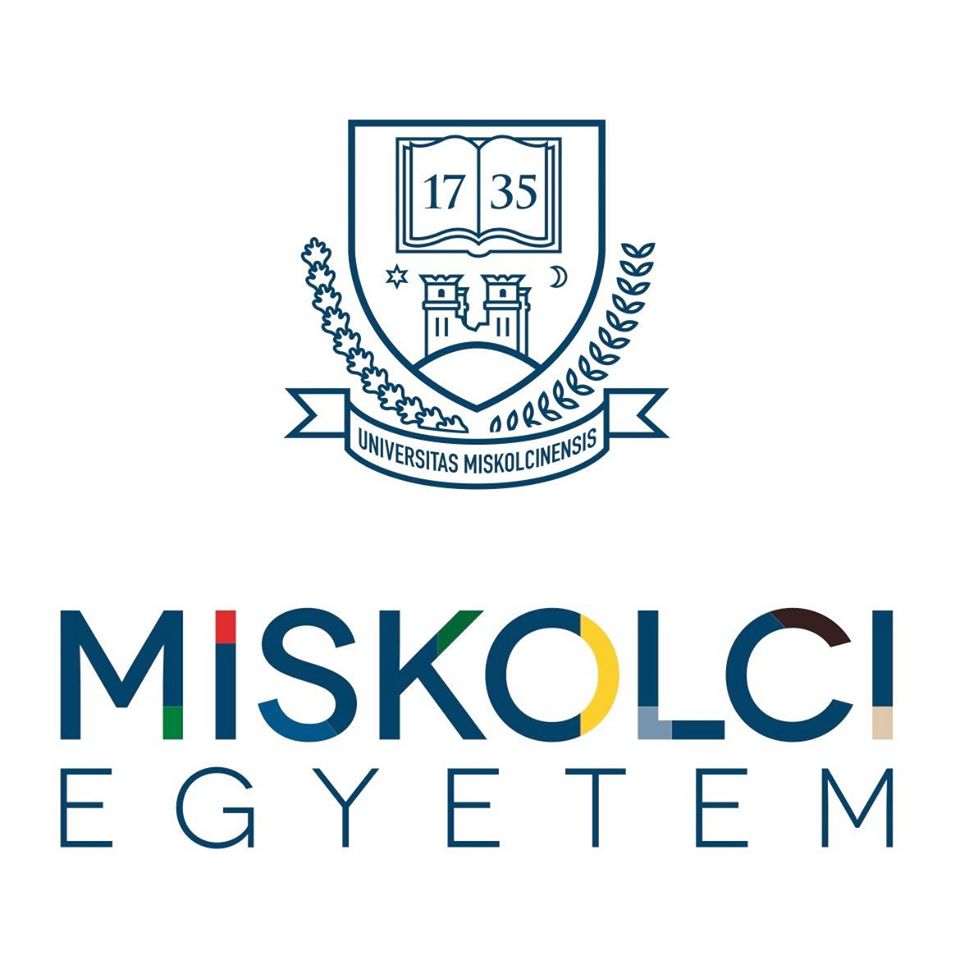
Pathway 6


ENVIRONMENTAL AND GEOTECHNICAL ENGINEERING
Pathway 6 and its reversal, Pathway 7 offers the mobility between the Geotechnical Engineering MSc of University of Zagreb Faculty RGNF and Environmental Engineering MSc of the University of Miskolc. As in the case of Pathway 5, the joint programs based on Pathway 6 and 7 will focus on competencies that are highly important during the whole mining cycle in phases such as risk assessment and planning of mine voids and mining waste facilities, at operation and management of waste facilities as well as during mine closure and post-mining operations. Both programmes last for 4 semesters and start in September. Pathway 6 offers for students from Zagreb to study in Miskolc in the second (summer) semester
CONTACT
Prof. Tamás Madarász:

1st - winter [ECTS]
Statistics [5]
Soil mechanics II. [5.5]
Applied geophysics I. [6]
Engineering geology [5]
2 Optional courses [8.5]
Demolition of structures [3.5]
Measurement technology [3.5]
Numerical mathematics [3.5]
Clay mineralogy [5]
Geoinformatics [5]
Chemistry for miners [5]
Renewable energy [4.5]
[30]

2nd - summer [ECTS]
[30]

3rd - winter [ECTS]
Ground improvement [5.5]
Underground chambers [5.5]
Earthworks (Geotechnical engineering) [5.5]
Tunneling [5.5]
2 Optional courses [8]
Mining law and regulations [3]
Traffic routes [3.5]
Economics evaluation of projects [4.5]
Ventillation of underground rooms and tunnels [3.5]
Geotechnical design [3.5]
Soil dynamics [4.5]
Underground waste dumps [4.5]
Testing and monitoring in geotechnics [5]
[30]

4th - summer [ECTS]
Projecting in mining [7]
Management [2]
Master thesis [21]
[30]

Course descriptions of the mobility semester
Groundwater flow and contaminant transport modeling
- Acquired store of learning:
The students will be familiar with the theoretical and practical aspects of the numerical methods widely used in the modern hydrogeology. The students will be able to use a worldwide known numerical environment. Using this environment the students will possess an ability to solve simple problems in the field of hydrodynamics and contaminant transport, and will learn that basic
knowledge based on which getting more experiences they will be later able to solve also more complex simulation problems.
This is one of the applied courses of key importance on the Remediation and Environmental Geotechnics specialisation which provides knowledge and practical tools to understand and model the flow and transport of contamination in the subsurface environment.
Theoretical part is complemented by individual modelling exercise which students should complete by means of modelling software applied widely for environmental assessments. - The short curriculum of the subject:
Tasks and aims of GW flow and contaminant transport modeling. Theory of GW flow modeling: the flow equation and its numerical solutions. The phenomena of contaminant transport in porous medium, the different forms of the transport equation. Analytic and numerical solutions. Particle tracking algorithms. Data-system of GW flow and contaminant transport models. The reliability of data, the aspects of data evaluation and control, type of dataset errors. Calibration of models. GW flow and contaminant transport modeling using the Processing MODFLOW environment. Solution of demo problems and investigation of case studies. Practical work: self-made models of simple real problems.
Geotechnical engineering
- Course Description: The students will be familiar with the basic concepts of geotechnical engineering, with the principles of designing and with the construction methods of different buildings and objects.
This is a course providing theoretical background and applied skills to students in the field of civil engineering tasks which are necessary to complete in the near-surface environment during remediation tasks. This is an important fundamental course in the Remediation and Environmental Geotechnics specialisation.
Lectures are complemented by calculation exercises and by the individual completion of simple case study problems. - The short curriculum of the subject:
Review of foundation studies. Legal and authorization background. EUROCODE 7. Concrete as building material. Engineering design, stresses and loads. Design of concrete and reinforced concrete structures. Design of retaining walls. Jet-grouting. Building of slurry wall. Digging/excavations. Building of water-supply and channeling networks. Underground structures. Utility ducts. Hydraulic engineering structures: river walls, dams, controlling objects. Practical work: self-made solutions of simple case-study problems.
Contaminated site remediation
- Course Description: The course aims to enable registered students to identify soil and groundwater contamination issues, to train them in contaminated site investigation, remediation design and implementation. The students shall be able to understand the main elements of contaminated land management tools e.g. problem formulation, risk based target value setting and risk assesment, site investigation, hydrodynamic and contaminant transport modeling, remediation action, and monitoring.
This is one of the applied courses of key importance on the Remediation and Environmental Geotechnics specialisation which provides knowledge and practical tools to complete remediation tasks and projects in the subsurface and near-surface environment.
Theoretical part is complemented by completion of individual reports on case studies of remediation tasks. - The short curriculum of the subject:
– Setting the stage, context of contaminated site remediation
– Historical overview of site remediation
– The process of site remediation
– Site Investigation on contaminated land
– Type and behaviour of contaminants in the subsurface environment
– Behaviour of contaminants in groundwater
– Chemistry of site investigation; Threshold value systems and their role in remediation
– Quantitative risk assessment and site specific, risk based remediation; Remediation methods and aspects of their selection; Remediation without excavation; Remediation with soil excavation
– Hydraulic protective measures; Isolation from the environment; Monitoring activities
– Legal framework
Risk Assessment and its role in remediation Case studies
Practical work: self-made solutions of simple case-study problems.
Environmental risk assessment and remediation
- Acquired store of learning:
The students will be familiarized with the basic concept and framework of Environmental and Human Health Risk assessment and its relationship to contaminated land remediation. The students shall be competent in reading and understanding risk assessment documentation and evaluating its correctness. They will be able to work together with other field specialists in a risk assessor team. They will get a brief introduction to remediation practices and their design and the European practice of remediation planning and monitoring.
This is one of the applied courses of key importance on the Remediation and Environmental Geotechnics spacialisation which provides knowledge and practical tools to understand concept of environmental risk assessment and to complete risk assessment tasks for the shallow subsurface environment.
Theoretical part is complemented by individual report preparation by students on different case studies. It develops the practical skills of the students as well as their responsibility and critical thinking. - The short curriculum of the subject:
History of Risk Assessment, principles and background of RA methodology, Overview of risk related terminology and definitions, Elements of HHRA methodology, Problem formulation, Exposure assessment, Toxicity assessment, Risk Characterization, Risk assessment and its role in site remediation, Risk interpretation, EU legislation and practice of RA methods, Hungarian legal background, various applications of RA methods, risk based target value and its determination, Case studies.
Practical work: self-made solutions of simple case-study problems.
Water quality protection
- Course Description: The students will be familiar with the basic concepts, tasks and purposes of water quality protection. The students will also learn about the contamination transport processes in surface water as well as in groundwater. The students will be prepared to assess and solve different water quality and contamination problems. The students will learn about the different tasks given by the European Water Framework in order to achieve the good status of water resources.
This is an applied course where the students get familiar with the most important skills and tools in the field of water quality analysis and treatment. Since water is the most sensitive medium in the near-surface environment, the course has a key importance for both specialisations.
Theoretical part is complemented by demonstrations and case studies. - The short curriculum of the subject:
Water as an environmental agent. General tasks and objectives of water quality protection. Water chemistry. Qualification of water samples. Transport processes in water. Vulnerability methods concerning groundwater resources. Remediation methods in case of different contaminations. Water quality models. Current quality status of national water resources. Water quality balance
calculations. Natural water purification methods. Practical work: self-made solutions of simple case-study problems.
Engineering and Environmental Geophysics
- Study goals: Introduction to shallow geophysical methods in solving geotechnical, engineering geological, hydrogeological and environmental problems. Overview of special geophysical methods and their developmental trends.
The course gives the fundamentals of environmental geophysics, which is a powerful analytical tool to discover and characterize environmental problems in the near-surface environment.
Theoretical part is complemented by demonstration of different applied near-surface geophysical methods and individual screening of relevant literature. This teaching methodology develops the theoretical basis as well as the critical thinking skills of the students. - Course content: From the group of near-surface geophysical methods, microgravity, magnetic, multi-electrode DC geoelectric, electromagnetic, ground penetrating radar, seismic refraction and surface NMR methods are presented. The principles of direct push logging technics and related applications. The interpretation of geophysical data by deterministic, statistical and inversion methods and their application to 1D, 2D and 3D models. The study of relationships between lithological/geotechnical properties of rocks and geophysical parameters. Applications to civil engineering and environmental problems such as sinkholes, cavity and void detection, seawater intrusions, contamination assessment, archeo-geophysics, forensic studies, UX0, road structures, petrophysical and geotechnical characterization of soils etc.
Environmental economics
- Study goals: To show the development of environmental thinking and the reason of foundation of environmental economics as new scientific field of the economics science. To analyze the current status of space science. To highlight the relationship between environment and economy at macro and micro-economic context, the applied tools and methods.
The course gives fundamental knowledge about economic rules and requirements related to environment. Knowledge obtained by this course is essential for a practicing environmental engineer.
The students shall complete individual tasks in a relevant topic during the semester and present them before the group. The completion of the assignment develops applied skills of the student as well as the autonomy, responsibility towards the environmental problems and critical thinking. - Course content:
1. Introduction, theory of sustainable development, basic definitions.
2. Development of environmental thinking.
3. Main differences between the mainstream economics and the environmental economics.
4. Relationship between economic growth and environmental quality.
5. Economics of environmental pollution.
6. Environmental regulations in the European Union.
7. Environmental policy in the European Union.
8. Energy policy in the European Union.
9. Climate change.
10. Alternative indicators.
11. Energy, as economic resource. World energy use.
12. Crude oil (prices, demand and supply, OPEC).
13. Global scenarios about World’s future.
14. Review of databases, useful links and sources/presentations.
Applied numerical methods
- Study goals: Upon completing the course, students shall understand the relation between engineering and mathematics; comprehend important concept of solution methods using both analytical and numerical techniques when the problems can be formulated using differential equations, system of linear equations and system of nonlinear equations. In addition, students shall be able to apply the optimization techniques to various engineering problems.
The course gives the theory background for calculations applying numerical methods which are essential to solve different statistical and geophysical tasks.
The course focuses on theory, which is supplemented by the course Computer sciences for engineers, providing the practical applications and exercises. - Course content:
Extrema of functions. Unconstrained and constrained optimization. Convex optimization, Minimization of functions with one variable (golden section, parabola method). Minimization of multivariable functions (Nelder-Mead, Newton, modified Newton, quasi-Newton, minimization with line search). Methods of penalty functions. Multiaided and multicriteria decision problems (Pareto effitient solutions). Linear programming. About Soft Computing (SC) methods: fuzzy systems, genetic algorithms, neural network.
Numerical solutions of ordinary diffrential equations and system of equations: Runge-Kutta, predictor-corrector, finite differences.

